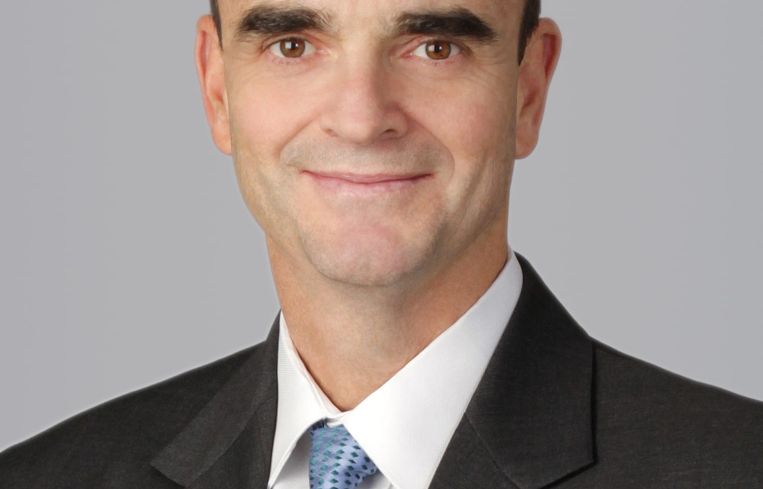Q&A: Paul Collins of C&W Talks DC’s 5G Future
By Keith Loria May 13, 2021 3:05 pm
reprints
There’s no denying that fifth generation (5G) wireless systems will have a huge impact on the office market as it becomes more the norm in the months and years ahead.
5G aims to enhance mobile broadband services and expand mobile networks to support a vast diversity of devices and services and connect new industries with improved performance, efficiency and cost. The 5G platform can support a 10,000-time increase in traffic capacity and network efficiency. It can also empower new user experiences like VR, AR, and will enable the ecosystem of connected objects—cars, machines, sensors and other devices.
But, 5G is still very much in its infancy, and things aren’t happening as quickly as some might hope.
The pandemic has accelerated the necessity of 5G in the workplace as it’s quickly becoming table stakes for investors and landlords as they pivot to tenant demand.
5G lets employees collaborate and move about freely (allowing for distancing) from almost anywhere in the building – having essentially unlimited bandwidth and data. There are also economic benefits to landlords both indoors and on rooftops as the carriers rollout the installation.
Paul Collins, executive vice chair in Cushman & Wakefield’s Washington, D.C. office, spoke with Commercial Observer about how 5G could potentially alter the landscape for landlords and investors in the foreseeable future.
Commercial Observer: Why is 5G so important for today’s workforce?
Paul Collins: 5G will allow the workforce to be mobile in a way that has never existed before. It is a generational change in the way we consume data. In addition, 5G will bring approximately 4.5 million related careers and add roughly $1.5 trillion in economic growth. It’s going to change how we do things, but in order for it to be successful, we need to lay it out across the country and across the world.
How did the pandemic play a role in the need for 5G in office spaces?
The pandemic actually created a migration of the network to serve residential communities as the population moved to a work from home environment. 5G will help ensure that companies with the hybrid model can provide robust connectivity at work and at home.
For those unfamiliar or a little confused about it, why is 5G so much better?
5G supports more diverse applications and more connections providing more capacity, lower latency, and increased speed. 5G will handle the exponential growth in demand for capacity, connectivity, and capability ultimately delivering a better, faster experience for all.
How have you seen 5G incorporated into Washington, D.C.’s landscape? Is it becoming more prevalent in offices, multifamily, retail? What have you noticed?
5G deployment in D.C. is in the very early stages. While it will eventually impact all sectors of CRE, it is still currently in the deployment stage. The carriers are actively seeking both institutional and private landlords to partner with in this deployment. The pandemic probably set this back about a year. There are supply chain issues and the cost of the spectrum has gone up, so carriers are paying a lot more than they thought they would need to pay. Still, D.C. is starting to ramp up.
Why is it so valuable in the office setting?
5G will be able to connect up to 100 times more devices, including everything from smart conference rooms to intelligent lighting, smartwatches, drones, VR headsets and A.I. machine learning.
How do you think 5G could potentially alter the CRE landscape for landlords and investors in the foreseeable future in our area?
Every building owner will want to ensure they have 5G connectivity. It’s never been more important to communicate with those around us. 5G technology will help us do that by transmitting and receiving voice, data, and video at speeds 1,000 times faster than previous generations. In short, it creates an incredible tenant and employee experience. You want to be an early adopter because you get significant income from putting it on your roof. These roofs are going to be worth upwards of $3 million, plus your tenants will have great connectivity.
How difficult is it to make a building 5G complaint? What needs to be done?
There are opportunities to work with firms that can get 5G installed on buildings and ensure fiber is run through the building as a first step. Making your building attractive to multiple carriers is the first step and working with a firm to design a comprehensive solution that brings the connectivity into the building from the outside radios will be critical.
Anything else you think would be important for people to know?
Owners are constantly looking to ensure they are providing the very best amenities within their buildings and wireless technology is impacting our lives like never before. 5G will provide services and an experience that will provide unmatched levels of scalability, capacity and efficiency.



